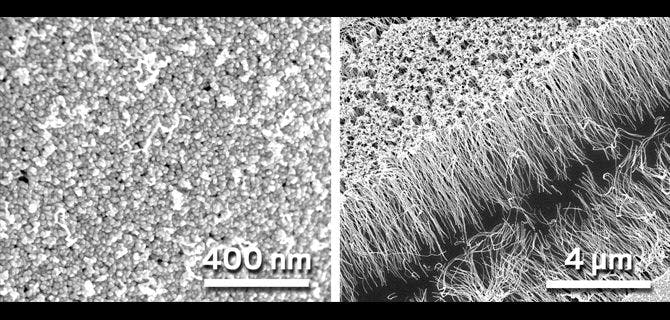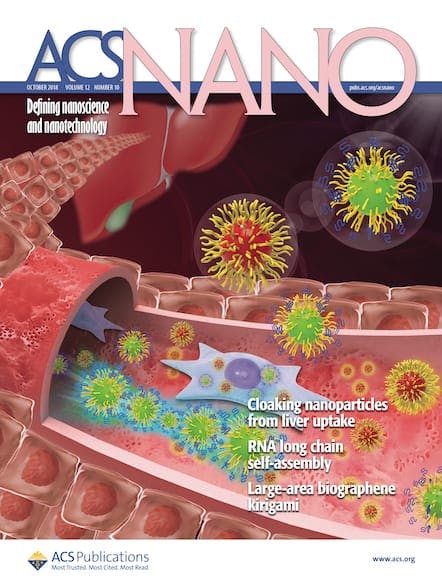By growing a forest of fine, densely packed gold nanowires on a rubbery surface, researchers have made ultrastretchable conductive films for electronic devices. The film can stretch up to nine times its original dimensions, greater than any elastic conductor made so far. Soft, thin, and stretchable electronics could be the basis for sensors that can […]

By growing a forest of fine, densely packed gold nanowires on a rubbery surface, researchers have made ultrastretchable conductive films for electronic devices. The film can stretch up to nine times its original dimensions, greater than any elastic conductor made so far. Soft, thin, and stretchable electronics could be the basis for sensors that can be embedded into apparel or wrapped around body parts to monitor them. They could also be used to make artificial skin for humanoid robots.
Previously, researchers have made stretchy, conductive films by embedding or coating polymer sheets with interconnected webs of metal nanowires or carbon nanotubes. But repeated flexing and stretching of the films can separate the rigid nanomaterials from the soft elastomers.
Wenlong Cheng and his colleagues at Monash University took a different approach. They treated a thin polymer sheet with (3-aminopropyl)trimethoxysilane and then washed it with a suspension of negatively charged gold particles, which stuck to the surface. Next the researchers immersed the films in a concentrated gold salt solution, and gold strands grew from the particles. The process resulted in a packed array of standing nanowires strongly attached to the polymer.
The prepared films look like gold foil. But a closer look under the electron microscope shows that the nanowires resemble bunches of the long, thin enokitake mushrooms found in Asian cuisine: They are narrow at the bottom and have nanoparticle “caps” at the top that touch each other. When the polymer is stretched, the caplike heads separate into clusters. Further stretching pulls the wires away from each other within a cluster but the clusters stay connected to neighboring ones at the base. This leads to an accordion-like structure that allows the film to maintain over 93% of its conductivity even after being stretched and released 2,000 times.
When the gold nanowire films were built on top of 20-µm-thick films of Ecoflex, a highly stretchable silicone rubber, the material could stretch by as much as 800% without losing conductivity. Patches of Ecoflex-based films placed on a volunteer’s knuckles stayed firmly attached after repeated hand flexing.
To show the film’s practicality, the researchers made a stretchable energy-storing device by sandwiching an electrolyte in between two pieces of gold nanowire film used as electrodes. They also used the film to create a system to recognize facial expressions. Nine sensor patches made with the film, placed on a volunteer’s face, measured the electrical signals from small muscle movements. The sensor patches were sensitive enough for the system to accurately identify happy, sad, angry, surprised, or scared expressions.
“This is a very exciting advance in the field of stretchable electronics,” says Sheng Xu, a nanoengineer at the University of California, San Diego.
Stanford University chemical engineer Zhenan Bao is cautiously optimistic. The high cost of gold could be a drawback to the approach, but “the high conductivity and high stretchability is impressive,” she says.
This article is reproduced with permission from C&EN (© American Chemical Society). The article was first published on October 11, 2018.
